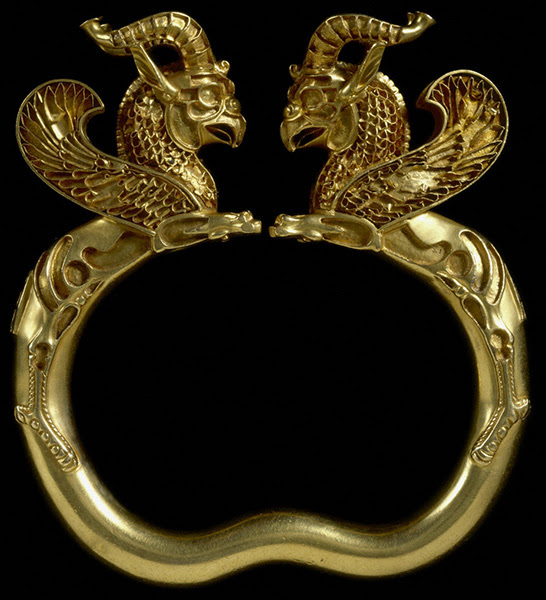On loan from the British Museum, The Cyrus Cylinder and Ancient Persia: A New Beginning concludes its U.S. tour with a nine week presentation at the Getty Villa which runs until December 2, 2013. Found at Babylon in 1879, the Cyrus Cylinder is among the most celebrated discoveries from the ancient world, with a legacy that resounds to this day.

[Credit: © The Trustees of the British Museum]
Even before its discovery, Cyrus had been renowned as a benevolent and noble ruler. The Greek historian Xenophon (about 430–354 B.C.) presented him as an ideal leader in his Cyropaedia, while Old Testament texts praise Cyrus for bringing an end to the Jewish exile in Babylon.

12.3 x 11.6 x 2.6 cm [Credit: © The Trustees of the British Museum]
In taking Babylon, Cyrus brought what was recently the heart of a great kingdom into the growing Achaemenid Empire. Rather than imposing Persian practices on its peoples, however, he sought to uphold their traditions. This is evident from the Cyrus Cylinder itself. For one, the inscription was written in the local language, Babylonian.

19 x 23.6 cm [Credit: The Getty Research Institute]
Cyrus's policies and achievements formed the basis of the multiethnic Achaemenid Empire, which introduced new forms of writing, religion, and luxury goods to the Near East. In addition to the Cylinder, the exhibition features a number of related objects that highlight the Empire's artistic, cultural, and historical achievements of the Achaemenid Empire of Iran. These include architectural fragments, finely carved seals, and gold jewelry, vessels, and luxury objects from the Oxus Treasure.
As a unique accompaniment to the Getty's installation, a recent acquisition by the Getty Research Institute will be presented for the first time. Luigi Pesce's Album fotografico della Persia (1860) contains the earliest photographs of the Achaemenid palaces and audience halls at Persepolis, together with views of contemporary Tehran. The album is of particular relevance to the display of the Cyrus Cylinder, for Pesce dedicated it to Sir Henry Creswicke Rawlinson, who would publish the text of the Cylinder in 1880.
Source: J. Paul Getty Museum [October 21, 2013]